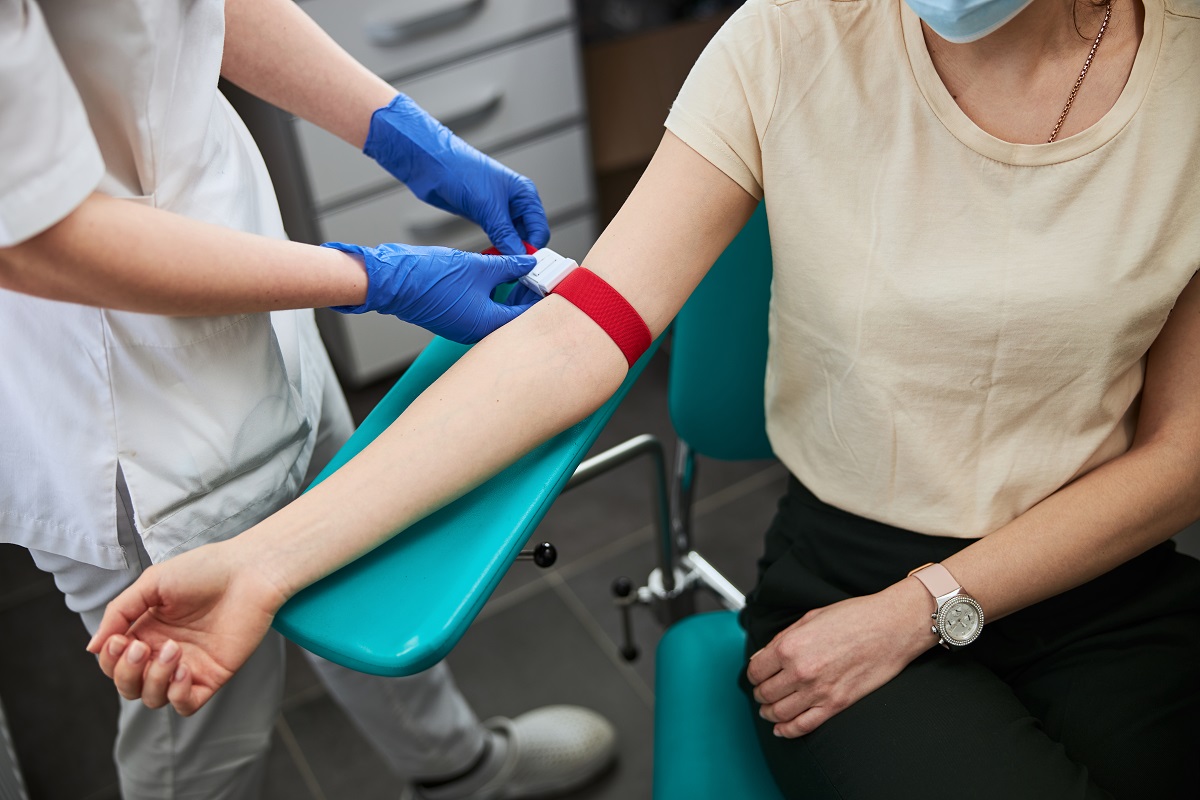A health condition that causes the body to absorb more iron from foods leading to increased iron levels in the blood is called hemochromatosis. The excess iron that remains in the body is stored in several organs (especially in the liver, pancreas, and heart). High iron levels in the body can cause some dangerous health conditions such as heart and liver disease, diabetes, and others.
There are several hemochromatosis types but most commonly people experience this condition due to a gene that usually passes from biological parents to their children. However, a few people experience serious health problems despite this abnormal gene. While some people do not notice any symptoms, others experience hemochromatosis symptoms during and after adulthood.
One of the most common treatment options used to treat this condition is removing the blood from the body. It is an effective treatment because most iron is located in the red blood cells.
Symptoms
Check below some symptoms that usually appear in people with hemochromatosis:
- Erectile dysfunction (ED)
- Reduced sexual desire
- Diabetes
- Weakness
- Fatigue (extreme tiredness)
- Abdominal pain
- Joint pain
- Liver or heart failure
- Memory problems
- Gray or bronze color of the skin
Usually, the most common hemochromatosis type is present at birth but it does not cause any symptoms until adulthood or later. For instance, men experience symptoms after 40 years old in most cases while women after 60 years old.
Furthermore, it is advised to ask your healthcare professional about genetic testing if you have a family member with this condition. Do not hesitate to see a doctor if you experience any of the previous symptoms.
Causes
In most cases, people experience this condition due to a gene change (mutation). This gene is responsible for how much iron is absorbed from foods you are eating. Moreover, the abnormal gene runs families. The most common type of this condition is called hereditary hemochromatosis.
Gene Mutation that Leads to Hemochromatosis
A gene that causes most hemochromatosis is called HFE. In most cases, people inherit one HFE gene from each parent. HFE has two mutations usually (including C282Y and H63D). To determine if you have this mutated gene, you should ask your doctor about genetic testing. These tests can also determine which type of HFE mutation you have.
- People who inherit two mutated genes may develop hemochromatosis and this abnormal gene can pass to their children too. However, not everyone who inherits these mutated genes develops this condition or any health problems associated with excess iron.
- Those who inherit only one mutated gene are less likely to develop this condition but it also can spread to their children. Such people are called carriers because they have this abnormal gene but do not experience any health problems. Furthermore, children may also not develop this condition because another parent may not have this abnormal gene.
How Hemochromatosis Impacts the Organs?
This mineral (iron) is vital for different body functions and it helps to produce blood. However, increased iron amounts are toxic.
The liver produces a hormone (Hepcidin) that helps to control the amount of iron absorbed by the body and how it is stored. This condition (hemochromatosis) negatively affects the ability of this hormone, which leads to increased amounts of iron in the body. In most cases, the iron is stored in vital organs (especially in the liver). Over the years, this iron excess can cause chronic health problems as well as organ failure. These include heart failure, kidney disease, cirrhosis, diabetes, and others.
Hemochromatosis Types
While inherited hemochromatosis is the most common type, there are other types of this condition. For example:
- Juvenile hemochromatosis – The problems caused by this type are similar to those of hereditary hemochromatosis. The only difference between them is that juvenile hemochromatosis occurs mostly in young people while the most common type is in adults. For instance, the hemochromatosis symptoms due to iron buildup appear between 15-30 years old compared to the hereditary type.
- Neonatal hemochromatosis – This is a severe form of hemochromatosis in which iron buildup happens fast during pregnancy in a developing baby. Experts think this hemochromatosis type is an autoimmune disease.
- Secondary hemochromatosis – This is the last hemochromatosis type and it is not inherited. Most people experience iron buildup due to certain existing health problems including anemia or liver disease. Thus, these people require many blood transfusions that may lead to iron buildup.
Risk Factors
The following factors can elevate your risk of getting hemochromatosis. Examples include:
- Two abnormal HFE genes – You are at increased risk of developing this condition if you inherit the mutated gene from both biological parents.
- Family history – If a family member (a parent or sibling) has hemochromatosis, you are at increased risk of developing one. Discuss with your doctor about genetic testing in such cases.
- Ethnicity – This condition happens mostly in people of Northern European descent compared to people of Black, Hispanic, and Asian ancestry.
- Sex – Males are more prone to develop this condition than females because they lose iron through menstruation and pregnancy. However, after menopause begins or a hysterectomy, the risk of hemochromatosis increases.
What Are The Possible Complications of Hemochromatosis?
If you ignore the symptoms and do not get treatment for this condition, it may lead to several complications. These include:
- Liver conditions – For example, cirrhosis (permanent damage to the liver), which increases the risks of other life-threatening conditions.
- Diabetes – Damage to the pancreas that causes diabetes.
- Heart disease – Iron buildup in the body also can negatively affect the heart. For example arrhythmia, congestive heart failure, and others.
- Sexual dysfunction – This condition also may cause erectile dysfunction (ED) in men and the absence of menstrual periods in women.
- Changes of skin color – Excess iron in the body can also change the color of the skin making it appear gray, bronze, or other colors.
Diagnosis
Sometimes, it is challenging to diagnose this condition because it causes similar symptoms to other diseases. However, there are many people with hemochromatosis who do not experience any symptoms and the condition can be identified during irregular blood tests. In some cases, this health problem can be noticed during genetic testing for other reasons.
Blood Tests
The following tests are usually used to determine whether you have iron buildup. For example:
- Serum transferrin saturation – This is a special test that measures the amount of iron bound to the protein transferrin. For instance, if test results show that transferrin saturation is more than 45% it is considered too high.
- Serum ferritin – It is a test that shows how much iron is stored in the liver. This test is usually done when serum transferrin saturation is higher than it should normally be.
However, to ensure you have hemochromatosis you should do more blood tests because the results listed above can appear due to other health problems.
Additional Tests
The following tests are usually done to exclude other health problems that cause similar symptoms. Check below some of them:
- Liver function tests – These tests help to determine how well your liver works and identify any damage.
- MRI (magnetic resonance imaging) scans – Imaging tests are performed to get detailed images of different body organs including the liver, heart, kidneys, and others.
- Genetic testing – If any of the previous tests identify high iron levels, you may need to perform genetic tests to determine whether you have an abnormal HFE gene.
- Biopsy – Physicians often perform a liver biopsy if they suspect it is damaged. During this procedure, they will take a small sample of tissue and send it to the laboratory for testing. Doctors check for excess iron, scarring or cirrhosis, and other problems.
Treatment
Blood Removal
This is an effective option to remove excess iron from the body. In most cases, this helps to reduce to get rid of iron from the body. This procedure is similar to donating blood and it is known as phlebotomy.
This treatment option also helps to reduce the risk of complications and lessen the symptoms caused by hemochromatosis. However, it cannot reverse damage once it happens. However, physicians may recommend other treatment options because blood removal is not possible. Phlebotomy cannot be performed due to some health problems (including heart complications or anemia). Discuss with your healthcare professional for more details.
Home Remedies
The following tips can help to treat this condition along with blood removal. Avoid using the following supplements and foods including:
- Iron supplements or any product that contains it
- Vitamin C supplements
- Alcoholic beverages
- Raw fish and shellfish
However, dietary changes usually are not required for people with hemochromatosis or who receive blood removal treatment.
Frequently Asked Questions
What are foods that help with hemochromatosis?
These include:
- Fish
- Eggs
- Vegetables and legumes rich in protein
- Lean poultry
- Fresh fruits
- Low-fat dairy
For more details, discuss it with your physician.
What are the complications of hemochromatosis?
People with this condition may experience some complications, especially if do not get treatment. For example:
- Arthritis (including joint pain, swelling, and stiffness)
- Skin color changes
- Endocrine disorders (such as hypothyroidism)
- Heart disease (including congestive heart failure, arrhythmia, and others)
- Infections
- Osteoporosis (brittle bones)
- Diabetes
- Liver conditions (such as cirrhosis or cancer of the liver)
Immediately contact your doctor, if you notice any of the previous complications.
What is the primary cause of hemochromatosis?
This condition usually happens due to a genetic mutation that runs in families. In other words, people can develop hemochromatosis if an abnormal gene passes from biological parents to biological children. If you have additional questions, ask your healthcare professional.




